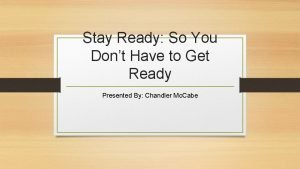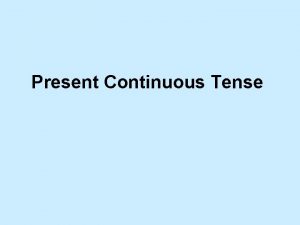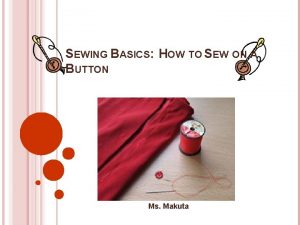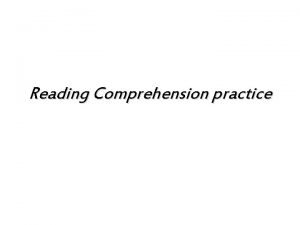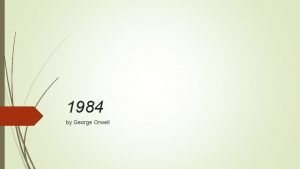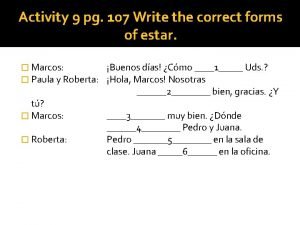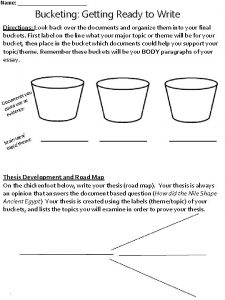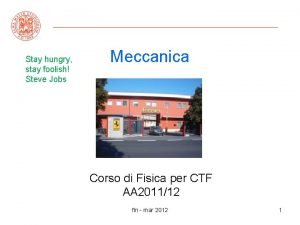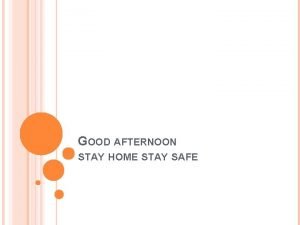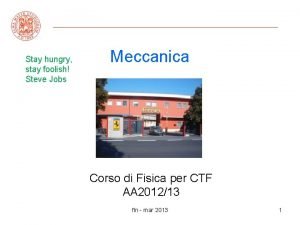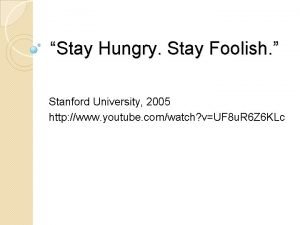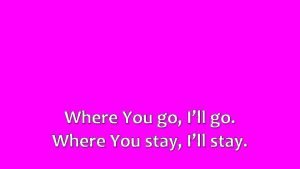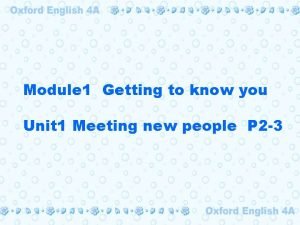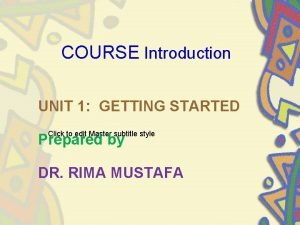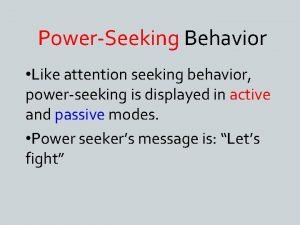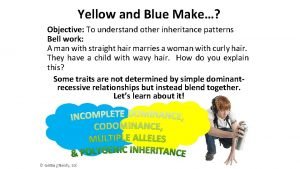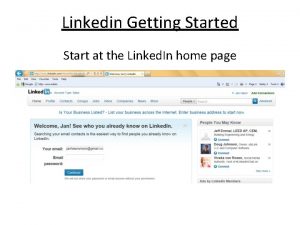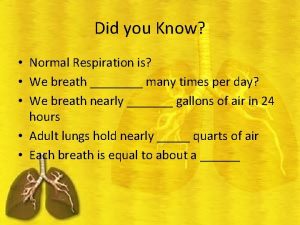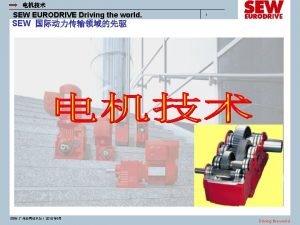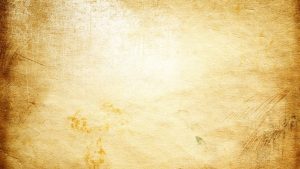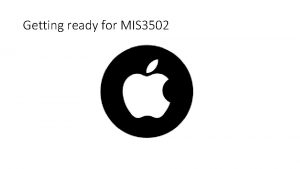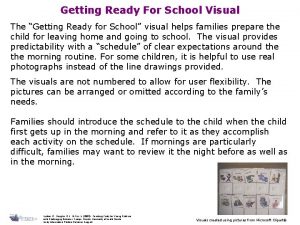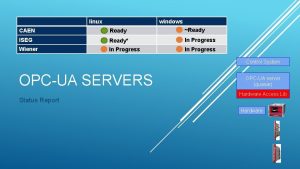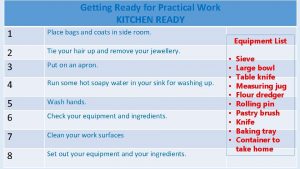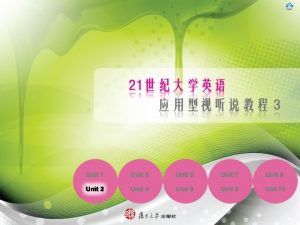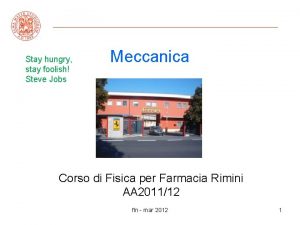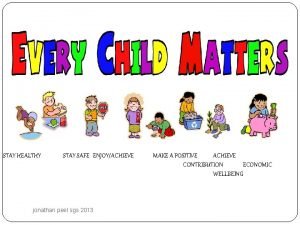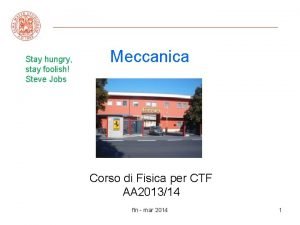Part 3 Getting Ready to Sew 1 Stay









































- Slides: 41

Part 3 Getting Ready to Sew 1

Stay Organized • Gather all your notions and supplies • Double-check the steps to take • Press after each construction step • Fit as you go 2

Patterns and Their Parts • Pattern envelope • Front – Drawing or photo – Several garment views – Lists pattern number – Size – Price – “easy” 3

• Guide Sheet • Step-by-step information for cutting, marking and sewing • Cut out layouts and general information • How to lengthen or shorten pattern • Reverse side has sewing directions 4

Cutting Layouts • Is a diagram that shows how to arrange pattern pieces on fabric • Separate cutting layout may be included for interfacing and lining 5

6

Sewing Directions • Step-by-step sewing directions appear on the back of the guide sheet • Fabric key shows how shading and texture indicate the right and wrong side of fabric any interfacing or lining 7

Pattern Pieces • Each piece marked with a number or letter with a specific name (collar, sleeve) • Number of fabric pieces to be cut is also printed on the pattern piece • Symbols and lines serve as guides 8

Pattern Preparation • Pieces will tear quite easily • 1. Remove the entire pattern from envelope • 2. On the guide sheet, circle the cutting layout you will use 9

• 3. select the pattern pieces for the view you are sewing • 4. fold the rest of the pattern pieces and put away • 5. cut apart any pattern pieces printed together that you need 10

• 6. write your name on the guide sheet, pattern envelope and all the pattern pieces • 7. smooth out pattern pieces • 8. on multi-sized pattern, mark cutting lines for your size • See page 484 Figure 7 -4 -know symbols • See page 484 Figure 7 -5 11

Adjusting the Pattern • Loosely fitted garments, minor differences can be overlooked • For fitted garments, measurements should correspond to your body measurements 12

Understanding Ease • Pattern sizes are designed for the body measurements listed on the pattern envelope • Most garments have ease added to the pattern • Ease is the amount of fullness added to a pattern to allow for movement and comfort 13

Comparing Measurements • Compare your measurements with the ones listed on the pattern envelope • If a measurement is not listed, measure the actual pattern piece • Seam lines are always 5/8 of an inch 14

15

Pattern Adjustments • Pg 487 • Lengthen • Cut the pattern at adjustment line • Keep edges parallel • Tape pattern pieces with other paper • To add to length measure from the edge of the pattern • Shortening • Fold the pattern along the adjustment line and bring fold up exactly where it needs to meet new line and tape • At lower edge redraw new line 16

Adjusting Width • Total width adjustment of 2 inches or less can be made at the side seams • Adjustments over 2 inches require cutting and spreading pattern pieces • See page 488 figure 8 -4 17

• To increase • Tape paper along pattern piece edge • Redraw cutting lines and seam lines • To decrease • Measure in ¼ of necessary amount • Redraw cutting lines and side seams • See page 488 18

Preparing Fabric • Straightening Fabric Ends • Selvage –two finished edges running lengthwise • Straighten the fabric by pulling if possible and on knitted you need to cut • See page 490 Figure 9 -1 -fabric terms 19

Preshrinking Fabrics • Wash or dry-clean fabric to prevent of minimize shrinkage • Helps remove fabric finishes that cause stitching problems 20

• Washable fabrics – Simply wash – If ravel easily, zigzag the raw edges • Hand-washable – Fold fabric and place in hot or warm water for 30 minutes and tumble dry or dry flat • Dry clean – Take to a dry cleaner or self service 21

Straightening the Grain • Off grain – when the crosswise and lengthwise yarns are not at right angles • If not straightened the final product might pull or twist • To straighten pull on the true bias • See page 491 Figure 9 -5 22

Pressing Fabric • Press fabric and pattern pieces if necessary • Fabric needs to be flat and no wrinkles 23

Laying out the Pattern • Finding the right side • Usually right side is out on the bolt • May be shinier or brighter 24

Folding the Fabric • Cutting layout shows exactly how to fold fabric • Most are folded with right sides together • Stripes and plaids are folded wrong side out for matching 25

• Fabric may need to be folded lengthwise, crosswise, double, or partial • See page 492 Figure 10 -1 26

See page 492 figure 10 -1 • Lengthwise – Fold fabric lengthwise with right sides together • Crosswise – fold fabric crosswise, right sides together • Double fold – Fold fabric twice along the lengthwise grain, right sides together (usually for knits) • Partial fold – Fold fabric on lengthwise, right sides together only wide enough for pattern piece 27

• After folding, smooth out any wrinkles • Work on a large, hard surface to full width of fabric can be laid out 28

Pinning Pattern Pieces • Lay out all pieces in same position as shown in the cutting layout • Most are placed printed side up • An arrow or “place on fold” bracket indicates the grain line • Never tilt or angle a piece to fit • Place pins at right angles 29

Follow These Steps • 1. Start with large pattern pieces that go on the fold • 2. Pin pieces that have a grain line arrow • 3. Count number of pieces on cutting layout and compare to the number on the fabric • 4. Double-check your layout 30

Special Layouts • Napped fabric – Lay pieces in same direction – Nap to run up the garment • Plaids – Even or uneven – Use dominant line of the plaid for the center front or back 31

• Stripes – Use a without-nap layout – Dominant stripe in middle of front and back • Directional prints – Use with-nap layout • Border prints – Place pieces on crosswise grain – Place others where they will fit 32

Cutting and Marking Fabric • Cut accurately • Use bent-handled shears • Cut directionally with the grain line • Follow correct cutting line on multisized pattern • Cut carefully around notches 33

• Leave pattern pieces pinned to the fabric until you are ready to sew • Save all fabric scraps – To test marking methods, stitches, pressing temperatures 34

What to Mark • Lines and symbols are important guides • Mark: • Darts, pleats, tucks, dots, placements lines for buttons, button holes, pockets, any trim 35

Marking Methods • Fabric marking pens – Contain ink that removes water or evaporates from fabric • Tracing wheel and dressmaker’s tracing paper – Papers that make permanent marks – Papers that make removable marks 36

Tailors Chalk • Mark on the wrong side • Can be easily brushed off so handle carefully 37

Summary • Pattern information and instructions are provided on the envelope, guide sheet, and tissue pattern pieces. • Body measurements should be compared to those on apattern envelope to see if any adjustments are needed 38

• Fabric may need straightening, preshrinking, or pressing • The cutting layout shows how to arrange pattern pieces on fabric 39

• Each pattern piece should be placed on the proper grain line before pinning in place. • Bent handled shears are used to cut out pattern pieces 40

• Construction lines and symbols can be marked with a fabric marking pen, tracing wheel and dressmaker’s tracing paper or tailor’s chalk 41
 Stay ready so you don't have to get ready
Stay ready so you don't have to get ready Present continuous questions
Present continuous questions Push back bob sew in
Push back bob sew in Sew vs sue
Sew vs sue List of past simple
List of past simple Sew what inc
Sew what inc The secret of getting ahead is getting started
The secret of getting ahead is getting started Superteachers.com
Superteachers.com 1984
1984 Getting ready to cook
Getting ready to cook The verb estar page 107 answers
The verb estar page 107 answers Ready cook safety
Ready cook safety Bucketing getting ready to write
Bucketing getting ready to write For adult
For adult Stay hungry stay foolish significato
Stay hungry stay foolish significato Good afternoon stay home stay safe
Good afternoon stay home stay safe Good morning stay home stay safe pictures
Good morning stay home stay safe pictures So stay so stay 再知己
So stay so stay 再知己 Stay hungry stay foolish significato
Stay hungry stay foolish significato What does stay hungry stay foolish mean
What does stay hungry stay foolish mean Where you go ill go
Where you go ill go The word ne er in the poem to daffodils means
The word ne er in the poem to daffodils means 2021 graduation songs
2021 graduation songs Footed ware glass types
Footed ware glass types Part to part ratio definition
Part to part ratio definition The phase of the moon you see depends on ______.
The phase of the moon you see depends on ______. Part part whole
Part part whole Two way anova minitab 17
Two way anova minitab 17 What is a technical description?
What is a technical description? Part whole model subtraction
Part whole model subtraction Unit 1 getting to know you ответы
Unit 1 getting to know you ответы Getting started with unix
Getting started with unix Getting started with excel
Getting started with excel Unit 1 getting started
Unit 1 getting started Power-seeking behavior examples
Power-seeking behavior examples What does yellow and blue make
What does yellow and blue make Infuecers gone wild
Infuecers gone wild Getting the wind knocked out of you
Getting the wind knocked out of you Chapter 5 lesson 4 mental and emotional problems
Chapter 5 lesson 4 mental and emotional problems Getting it right
Getting it right How to get to know someone questions
How to get to know someone questions Prayers before a big test
Prayers before a big test
